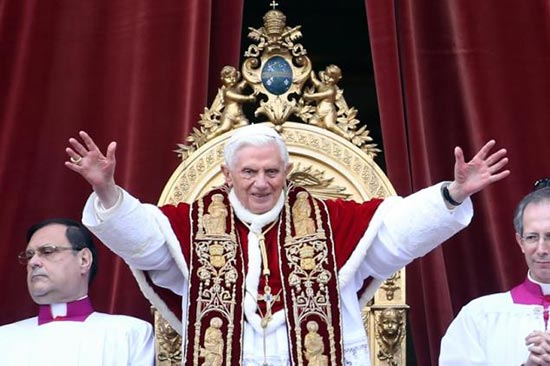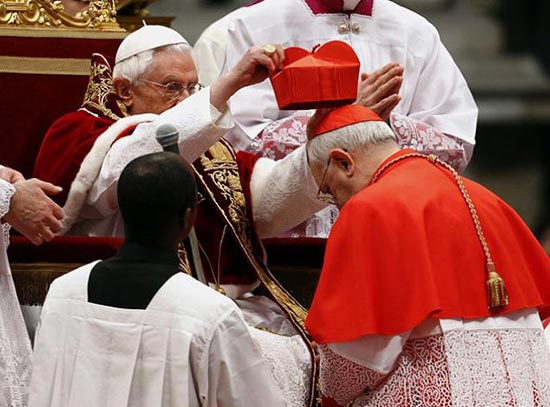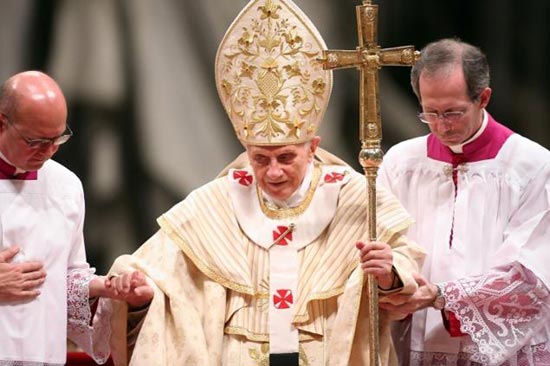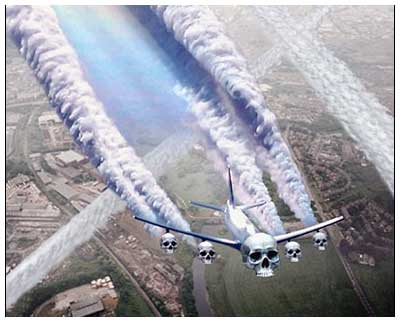Vaccine Damaged Children
Secret Government Database Reveals
 The general public is essentially unaware of the true number of people -- mostly children -- who have been permanently damaged or killed by vaccines. In fact, most parents would be surprised to learn that the government has a secret computer database, listed below filled with several thousand names of disabled and dead babies, children who were healthy and alive just prior to receiving the vaccines. Of course, the medical establishment and federal government don't readily disclose this information because they know it's likely to frighten parents into seeking other ways to protect their children. In other words, parents just might think this issue through on their own and decide to reject the shots.
The general public is essentially unaware of the true number of people -- mostly children -- who have been permanently damaged or killed by vaccines. In fact, most parents would be surprised to learn that the government has a secret computer database, listed below filled with several thousand names of disabled and dead babies, children who were healthy and alive just prior to receiving the vaccines. Of course, the medical establishment and federal government don't readily disclose this information because they know it's likely to frighten parents into seeking other ways to protect their children. In other words, parents just might think this issue through on their own and decide to reject the shots.
Federal Admission of Vaccine Risks:
In 1986, Congress officially acknowledged the reality of vaccine-caused injuries and death by creating and passing The National Childhood Vaccine Injury Act (Public Law 99-660). The safety reform portion of this law requires doctors to provide parents with information about the benefits and risks of childhood vaccines prior to vaccination, and to report vaccine reactions to federal health officials. Doctors are required by law to report suspected cases of vaccine damage. To simplify and centralize this legal requisite, federal health officials established the Vaccine Adverse Event Reporting System (VAERS) -- operated by the Centers for Disease Control and Prevention (CDC), and the Food and Drug Administration (FDA).
Ideally, doctors would abide by this federal law and report adverse events following the administration of a vaccine. However, the FDA recently acknowledged that 90 percent of doctors do not report vaccine reactions. They are choosing to subvert this law by claiming the adverse event was, in their opinion, not related to the shot. In fact, every year between 12,000 and 14,000 reports of adverse reactions to vaccines are made to the FDA (data initially accessible only through the Freedom of Information Act). These figures include hospitalizations, irreversible brain damage, and hundreds of deaths. Considering that these numbers may represent just 10 percent, the true figures could be as high as 140,000 adverse events annually. However, even this figure could be conservative. According to Dr. David Kessler, former head of the Food and Drug Administration, "Only about 1 percent of serious events [adverse drug reactions] are reported to the FDA." Thus, it is entirely possible that millions of people are adversely affected by mandatory vaccines every year.
Maybe it doesn't matter that doctors won't report vaccine reactions, because the federal government won't investigate them. Government officials claim VAERS was designed to "document" suspected cases of vaccine damage. No attempt is being made to confirm or deny the reports. Parents are not being interviewed, and the vaccines that preceded the severe reactions are not being recalled. Instead, new waves of unsuspecting parents and innocent children are being subjected to the damaging shots.
Who Pays for Compensation?
In order to pay for vaccine injuries and deaths, a surtax is levied on mandated vaccines. When parents elect to have their children vaccinated, a portion of the money they spend on each vaccine goes into a Congressional fund to compensate them if their child is hurt or killed by the shot.
The compensation portion of the law awards up to $250,000 if the individual dies, or millions of dollars to cover lifelong medical bills, pain, and suffering in the case of a living (but brain-damaged) child. To date, more than $1 BILLION has already been paid out for hundreds of injuries and deaths caused by mandated vaccines. Thousands of cases are pending.
Vaccine Injury Compensation Claims do not include private settlements, or the many families that become dependent on public assistance for medical and living expenses because of vaccine injuries. Therefore, taxpayers subsidize vaccine manufacturers and the federal government by paying for their vaccine-liability expenses.
How Are Vaccines Made?
 Vaccine production is a disgusting procedure. To begin, one must first acquire the disease germ -- a toxic bacterium or a live virus. To make a "live" vaccine, the live virus must be attenuated, or weakened for human use. This is accomplished by serial passage -- passing the virus through animal tissue several times to reduce its potency. For example, measles virus is passed through chick embryos, polio virus through monkey kidneys, and the rubella virus through human diploid cells -- the dissected organs of an aborted fetus! "Killed" vaccines are "inactivated" through heat, radiation, or chemicals.
Vaccine production is a disgusting procedure. To begin, one must first acquire the disease germ -- a toxic bacterium or a live virus. To make a "live" vaccine, the live virus must be attenuated, or weakened for human use. This is accomplished by serial passage -- passing the virus through animal tissue several times to reduce its potency. For example, measles virus is passed through chick embryos, polio virus through monkey kidneys, and the rubella virus through human diploid cells -- the dissected organs of an aborted fetus! "Killed" vaccines are "inactivated" through heat, radiation, or chemicals.
The weakened germ must then be strengthened with adjuvants (antibody boosters) and stabilizers. This is done by adding drugs, antibiotics, and toxic disinfectants to the concoction: neomycin, streptomycin, sodium chloride, sodium hydroxide, aluminum hydroxide, aluminum hydrochloride, sorbitol, hydrolized gelatin, formaldehyde, and thimerosal (a mercury derivative).
Aluminum, formaldehyde, and mercury are extremely toxic substances with a long history of documented hazardous effects. Studies confirm again and again that microscopic doses of these substances can lead to cancer, neurological damage, and death. Yet, each of them may be found in childhood vaccines.
In addition to the deliberately planned additives, unanticipated matter may contaminate the shots. For example, during serial passage of the virus through animal cells, animal RNA and DNA -- foreign genetic material -- is transferred from one host to another. Because this biological matter is injected directly into the body, researchers say it can change our genetic makeup.
Undetected animal viruses may jump the species barrier as well. This is exactly what happened during the 1950s and 1960s when millions of people were infected with polio vaccines that were contaminated with the SV-40 virus undetected in the monkey organs used to prepare the vaccines. SV-40 (Simian Virus #40 -- the 40th such virus detected since researchers began looking), is considered a powerful immunosuppressor and trigger for HIV, the name given to the AIDS virus. It is said to cause a clinical condition similar to AIDS, and has been found in brain tumors, leukemia, and other human cancers as well. Researchers consider it to be a cancer-causing virus.
What happens next, once this foul concoction -- live viruses, bacteria, toxic substances, and diseased animal matter -- is created? This witch's brew is forced into the healthy child.
Satanic Rituals:
Dr. Robert Mendelsohn often criticized modern medicine for its sanctimonious doctrine. He argued that "doctors are the priests who dispense holy water in the form of inoculations" to ritually initiate our loyalty into the larger medical industry. Dr. Richard Moskowitz agrees: "Vaccines have become sacraments of our faith in biotechnology. Their efficacy and safety are widely seen as self-evident and needing no further proof."
Others see a link between vaccinations and satanic rituals or witchcraft, where animals are sacrificed and their organs brewed in a hellish concoction of horrid substances: voodoo medicine by 21st century mad scientists. Sadly, our children are their unwilling subjects as society is slowly devoured by their insatiable appetite for human experimentation.
SECRET DATABASE!
Every year, the FDA receives thousands of reports of adverse reactions after vaccines. These include brain damage and death. This information is now available at the following link: VAERS Database. (We recommend starting with a basic search.)
Personal Stories of Vaccine Damage and Death
Preventing Vaccination’s Injuries and Deaths Support Groups
Who Cares?
Don’t you feel sad and highly disappointed, watching television networks and reading the newspapers so deeply focused on who is going to be the next Pedophile Emperor Pope of the house of lies, Vatican? Men who dress as women, but they hate women, and do not want to be intimate with women, wearing stupid looking lustrous outfits, red shoes and idiotic hats, promoting themselves to the position of ambassador of a male god in charge of your life and your soul.
The fabrication of the most barbaric, idiotic, man-made, patriarchal religious manuals of the 3 warmongering, murderous: Abrahamic, Adam and Eve based, misogynist religions: Judaism and its 2 derivatives: Christianity and Islam, the agents and promoters of ignorance, hate, violence, child molestation, slavery, women degradation, war, rape, murder, plunder, mediocrity and stupidity, has always been controlled and supported by the criminal elites for centuries, to divide and conquer, keeping people at each others’ throat.
Why? Because it would cost lot less and is much easier to dominate, rob, rape and murder people under a factious holy banner of religion.
Shouldn’t we know better by now? We, the humanity, are facing so many life-threatening problems worldwide at the moment, caused by the very same criminal elites and the said religions, shouldn’t we be focused on them?
Who cares what, or whom is going to be the next pope?

Pope Wanted. Must Possess Magnetic Charm. And Grit.
- By LAURIE GOODSTEIN and DANIEL J. WAKIN - March 7, 2013 - The New York Times
ROME — No candidate for pope can have it all. But the cardinals who will elect the next pontiff of the Roman Catholic Church seem to be looking for someone who combines the charisma of Pope John Paul II with the grit of what one Vatican analyst called, only slightly tongue in cheek, “Pope Rambo I.”

While it is too early to talk of front-runners, hints to the characteristics sought in a future pontiff can be discerned from the utterances of the cardinals who have spent the past week in meetings at the Vatican. Before Wednesday, when they stopped giving interviews, the cardinals frequently cited attributes the church now needs: a compelling communicator who wins souls through both his words and his holy bearing, and a fearless sheriff who can tackle the disarray and scandal in the Vatican.
Their focus on communication and good governance is in many ways an acknowledgment of the deficiencies of Pope Benedict XVI, who flew off in a helicopter to an unexpected retirement last week after a rocky eight-year tenure. But it is also a sign of the nostalgia for Benedict’s predecessor, John Paul II, a magnetic presence who commanded the spotlight on trips around the world and even as he lay dying.
On Benedict’s watch, the church lost sway in Europe, the United States and even Latin America. The central bureaucracy in Rome, the Curia, fell more deeply into dysfunction and even corruption. Cardinals from several countries commented this week that they were seriously troubled by recent reports in the Italian news media about a secret dossier that was given to the departing Benedict and was said to contain explosive evidence of sexual and financial blackmail. The confidential dossier is supposed to be shown to the next pope.

Few candidates come with the whole package of talents, and the Italian news media have even floated the notion that the cardinals are considering “tickets” that would pair a pastoral pope with a tough, savvy secretary of state who could act as an administrator and, if need be, enforcer.
The next pontiff may not need to execute a crackdown on Vatican infighting and misdeeds, but he must at least have the executive smarts to appoint a deputy fearless enough to confront the entrenched Vatican bureaucracy.
“The first thing he has to do is put greater order in the central administration of the Curia,” said Cardinal Edward Egan, the retired archbishop of New York. “He has to be willing to take criticism.”

And at the same time, “He has to be a man who understands the faith and can announce it in an attractive and uncomplicated way,” said Cardinal Egan, who voted in the conclave that elected Benedict, but is now just beyond the voting age limit of 80.
As of Thursday, all of the 115 cardinals eligible to vote and expected to come had arrived in Rome. But exactly when they will be locked into the Sistine Chapel to vote for the next pope remained uncertain. The cardinals have been meeting behind closed doors in the Vatican’s Paul VI hall every day this week, listening to one another speak about the challenges facing the church.
For those whose names have been circulated as “papabile,” or candidates for pope, the speeches serve in part as auditions.
The lag in scheduling the conclave indicated that the cardinals were still at the stage of assessing one another’s personalities, records and ideas, said the Rev. Federico Lombardi, the Vatican spokesman, in a news media briefing on Thursday.
Any serious papal candidate has to be prayerful, theologically sound and fluent in Italian, the language of the Vatican and of Rome, which is, after all, the pope’s own diocese.
Several cardinals have also said that the next pope must have had experience as bishop of a diocese. That description would exclude some cardinals who have served most of their years in the Curia and those with little pastoral experience, like Cardinal Gianfranco Ravasi, the erudite Italian whom Benedict gave the honor of preaching at the Vatican’s recent Lenten retreat.
Cardinal Donald Wuerl, archbishop of Washington, said in an interview, “Being a shepherd of a local church, I think, would be a very important factor if you’re going to be engaged in this idea of renewing the church spiritually.”
Several cardinals have also emphasized that a pope must be able to reach out to other faiths, improve relations with bishops around the world and forcefully present Catholic teaching.
Many of those mentioned as papabile are said to have proven talents as administrators, either in their archdioceses or in the Roman Curia, or both. These include Cardinals Angelo Scola, archbishop of Milan; Odilo Pedro Scherer, archbishop of São Paulo, Brazil; Peter Erdo, archbishop of Esztergom-Budapest and primate of Hungary; Leonardo Sandri, an Argentine with long experience in the Roman Curia; and Marc Ouellet, a Canadian who heads the Vatican’s powerful Congregation for Bishops.
But several of those prelates are known to be short on charisma or presence. Cardinals Erdo and Ouellet are said by associates and former students to be more comfortable reading from a prepared text than speaking spontaneously in front of crowds or giving interviews.
Other cardinals, meanwhile, have had their reputations climb with a proven ability to communicate with mass audiences, notably Cardinal Luis Antonio G. Tagle of the Philippines. But his age, just 55, works against him. He is the second-youngest cardinal, after Baselios Thottunkal of India.
Age is an important criterion, especially after the resignation of Benedict, who is 85. Many cardinals agree that the future pope would ideally be in his 60s, and Cardinal Wilfrid F. Napier of South Africa narrowed the age to the early 60s. He suggested in an interview that it was time for a longer papacy, to carry forward efforts to strengthen the church.
“You need more time to build on those foundations,” Cardinal Napier said. “I think we need a longer papacy to generate the energy and keep the momentum going.” He added, “From informal conversations, some of the other cardinals would be looking in that direction as well.”
In the past, it would have been unthinkable to have a serious papal contender from the United States, an economic and political superpower, but Vatican watchers say that for the first time ever, there is enthusiasm for two Americans who have both charisma and administrative strengths: Cardinal Timothy Dolan of New York, a garrulous presence, and Cardinal Sean Patrick O’Malley of Boston, a Franciscan friar.
While it remains unlikely that either will become pope, largely because the United States is still perceived as a global superpower whose interests do not always dovetail so smoothly with those of the Catholic Church, this conclave is the first to break the taboo.
“For the first time Americans are even being considered — that’s the news,” said Marco Politi, a veteran Vatican watcher in Italy.
Rachel Donadio, Michael Paulson and Jim Yardley contributed reporting.
Scientists: “Exclusive Club” To Assume Command Of Global Geo-Engineering
Jurriaan Maessen - March 5, 2013
Scientific publication envisions “a strategic multilateral implementation (of planetary scale geoengineering) through an exclusive ‘club’ that increases benefits to members at the expense of those excluded.”
 In a recent publication published by Environmental Research Letters, three scientists have published the results of a computer simulation “game”, probing several scenario’s on how to best organize a “unilateral implementation scheme” of global geoengineering.
In a recent publication published by Environmental Research Letters, three scientists have published the results of a computer simulation “game”, probing several scenario’s on how to best organize a “unilateral implementation scheme” of global geoengineering.
“(…) a sufficiently powerful international coalition might be able to deploy solar geoengineering. Here, we show that regional differences in climate outcomes create strategic incentives to form coalitions that are as small as possible, while still powerful enough to deploy solar geoengineering.”
Defining geoengineering as “intentionally reducing the amount of sunlight that reaches Earth’s surface through the use of stratospheric aerosols”, the authors used climate models (such as the ones used by the IPCC) as the basis for their “gaming” activities- which they describe as “global thermostat setting game”:
“The characteristics of coalitions to geoengineer climate are modeled using a ‘global thermostat setting game’ based on climate model results. Coalition members have incentives to exclude non-members that would prevent implementation of solar geoengineering at a level that is optimal for the existing coalition.”, authors Katharine Ricke and Ken Caldeira point out.
Under “rules and assumptions” the authors explain that “the game takes place in two stages.”
“During the first stage players choose their memberships and the winning coalition is formed. In the second stage, the winning coalition acts as a single actor to maximize the benefits of geoengineering to all coalition members. Players outside the coalition do not make decisions in this second stage.”
From the assertion that man made climate change will have different results from region to region, the scientists involved in this modeling business factored these differences into their “global thermostat setting game”, as a result of which researched different international coalitions that would be most likely to succeed in starting and maintaining a global geoengineering effort:
“(…) If a decision were made somehow to move ahead with the deployment of an intentionally introduced stratospheric aerosol layer, some regions might prefer a cooling or warming relative to the current climate, creating complicated problems in setting the global thermostat. In addition, several modeling studies have demonstrated that if solar geoengineering is used to compensate for rising greenhouse-gas concentrations and is then stopped abruptly, very rapid warming can occur. Thus, if solar geoengineering is ever implemented, stopping suddenly poses a threat.”
From this assertion follows a draconian consequence, namely that only a sustained geongineering effort of the earth’s atmosphere on the part of an international coalition can do the job. The premise of the paper, supported by their computer simulations, is that an “exclusive club” of nations taking the rein, would be the best way to sustain such a spraying campaign for a sufficient period of time:
“a strategic multilateral implementation through an exclusive ‘club’ that increases benefits to members at the expense of those excluded. If the option of a global coalition is accounted for in formulating a system of intracoalitional transfers, the game presented here always produces a stable and powerful coalition in which all coalition members benefit from excluding other parties.”
The rational behind this seemingly contradictory statement reads as follows:
“Under an exclusive coalitions model of international agreements to geoengineer, if one coalition breaks down, another is ready and eager to take its place. As the potential harm from termination grows (i.e., as the amount of greenhouse-gas forcings being compensated for with geoengineering increases), so too do the incentives to avoid this termination among all potential coalitions.”
That the geoengineering efforts by this exclusive club are a thing of the long haul is evident from the authors’ assertion that “if the coalition so decides, solar geoengineering can be implemented starting in 2015 and negotiations among club members only will determine the setting of the global thermostat for the next ten years. In each subsequent decade, negotiations begin anew, and determine a new thermostat setting for the next ten years.”
After the publication lists the outcomes of their gaming models, they conclude by stating that the “exclusive club” scenario, as opposed to an inclusive one, turns out to be the desired way to move forward:
“(…) the results of our game simulations show the maximum achievable benefits regions can gain by acting strategically to form exclusive clubs; this necessarily imposes damages on non-members relative to their preferences”.
The outcomes of this publication are inherently draconian, especially if we take into account the fact that the World Economic Forum in its latest Global Risks report warned that a “rogue nation” or individual could “hijack” global climate change for nefarious purposes. The report mentions several possible scenario’s, or X-factors, which could occur in the coming year, among which (page 57) a geoengineering nightmare, according to the report, “in which a country or small group of countries precipitates an international crisis by moving ahead with deployment or large-scale research independent of the global community. The global climate could, in effect, be hijacked by a rogue country or even a wealthy individual, with unpredictable costs to agriculture, infrastructure and global stability.”
This is an ironical confusion like only top globalist factions can produce. Where the World Economic Forum warns us about possible “rogue” parties moving ahead with planetary-wide geoengineering schemes, another group of globalist-funded scientists suggest an “exclusive club” shoud take the reins over global spraying efforts to “offset global warming”.
In the WEF-report we get the impression that the “rogue” parties described are parties that have not or will not sign onto global agreements presided over by the UN. This, according to the report, “leaves a gap for unregulated experimentation.”
“For example”, the report states “an island state threatened with rising sea levels may decide they have nothing to lose, or a well funded individual with good intentions may take matters into their own hands. There are signs that this is already starting to occur.”
“Recent studies”, the report goes on to state, “suggest that a small fleet of aircraft could inject a million tonnes of sulphur compounds into the stratosphere – enough to offset roughly half of the global warming experienced to date – for US$1-2 billion annually.”
According to environmental writer Clive Hamilton in a 2010 article for the Guardian “a powerful coalition of forces is quietly constellating around the idea of transforming the Earth’s atmosphere by simulating volcanic eruptions to counter the warming effects of carbon pollution. Engineering the planet’s climate system is attracting the attention of scientists, scientific societies, venture capitalists and conservative think tanks. Despite the enormity of what is being proposed — nothing less than taking control of Earth’s climate system — the public has been almost entirely excluded from the planning”.
In the context of the recent modeling tables published in Environmental Research Letters, these words by Hamilton (himself a believer in man-made climate change) have been taken account before they commenced with their “global thermostat setting game”. Hamilton wrote in 2010:
“If there is no international agreement an impatient nation suffering the effects of climate disruption may decide to act alone. It is not out of the question that in three decades the climate of the Earth could be determined by a handful of Communist Party officials in Beijing. Or the government of an Australia crippled by permanent drought, collapsing agriculture and ferocious bushfires could risk the wrath of the world by embarking on a climate control project”.
Apart from the fact that any planetary scale geoengineering effort would be incomprehensibly irresponsible- and apart from the fact that anthropogenic global warming is in essence a pseudo-science- the fact that scientists are now envisioning an elite club of nations taking the reins in global geoengineering should make the alarm-bells go off all over the place.
Kristen Meghan Is a Former Air Force Pilot Turned Chemtrail, Geoengineering Whistleblower. (Full Interview)
Kristen Gave a Ground Breaking Presentation of What She Had Discovered About Geoengineering, Chemtrails While Serving Her Country. This Brave Young Lady Has Put Her Livelihood and Life on The Line for Us. - Watch And Listen to Her Incredible Insider Story
How to Protect yourself from toxic chemicals, pesticides, heavy metals and radiation from EMF's
Published: July 28, 2018
Join us for a deep, remarkable, and empowering investigation into the threats—biological and environmental—that chemicals now present in our daily lives. Do you know what chemicals are in your shampoo? How about your cosmetics? Do you know what’s in the plastic water bottles you drink from, or the roundup in your garage, or your children’s pajamas? If you’re like most of us, the answer is probably no. But you also probably figured that most of these products were safe and that someone—the manufacturers, the government—was looking out for you. The truth might surprise you.
Learn the truth about toxic chemicals, our alarming levels of exposure, and our government’s utter failure to regulate them effectively. This panel reveals how dangerous, and how common, toxins are in the most ordinary things, and in the most familiar of places:
• Our water: Thanks to suburban sprawl and agricultural runoff, 97 percent of our nation’s rivers and streams are now contaminated with everything from herbicides to pharmaceutical drugs.
• Our bodies: High levels of hormone-disrupting chemicals from cosmetics, flame-retardants from clothing and furniture, even long-banned substances like DDT and lead, are consistently showing up in human blood samples.
• Our homes: Many toxins lurk beneath our sinks and in our basements, of course, but did you know that they’re also found in wall-to-wall carpeting, plywood, and fabric softeners?
• Our yards: Pesticides, fungicides, even common fertilizers—there are enormous, unseen costs to our national obsession with pristine green lawns.
Learn how you can make informed decisions about the products you buy, and to disentangle yourself from unhealthy products you don’t need—so that you and your family can start living healthier lives now, and in the years to come. What you don’t know can hurt you.
Panel Participants: Devra Lee Davis, Ph.D., M.P.H., Beth Lambert, Beth Greer, Dave Hunter
David Keith on the BBC HARDtalk Show Geo-Engineering BBC Host - Stephen Sackur
TOP SECRET Mission - Chemtrail Pilots SPRAYING BLOOD Cause Face to Face Near Mid-Air Collisions!!!
Chemtrails - Fully Exposed - Airplane Pilots Spraying Carcinogenic Mind-altering Chemicals, or Newly Developed Viruses and Bacteria Over U.S. Population
Published on Feb 3, 2013
A small edition to the "Fully Exposed" family. Many more to come. From the people that brought you sandy hook fully exposed. Search "What In The World Are They Spraying?" if you would like a full in depth look at the issue.






